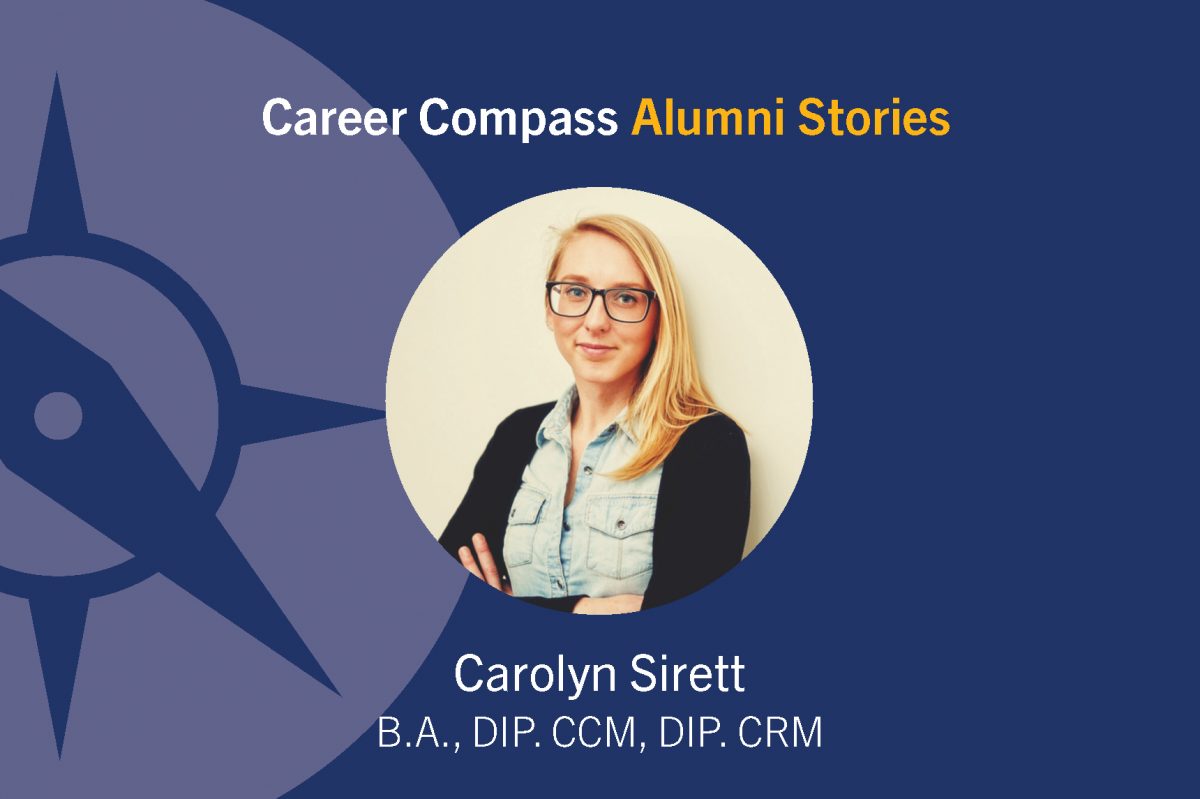
Carolyn Sirett Anthropology Alumni
Briefly, tell us about your job. What do you find most rewarding? What are your greatest challenges within this profession?
I am the conservator at the Manitoba Museum. My role is to ensure the long term preservation of 2.5 million artifacts and specimens that are in the Museum’s collection. As the conservator, I complete conservation treatments on artifacts in a lab where they are repaired, cleaned and prepared to go on display to the general public. My job also includes preventive conservation which entails monitoring environmental conditions in storage and displays, and creating mounts for exhibits. The most rewarding part of my career is being able to touch and handle some of the oldest, most unique historical artifacts.
I love when artifacts enter the lab in a very unstable condition, such as a shattered pot, and through various treatments, I am able to bring them back to their original form. I think that being in a career that has such a small professional population is a great challenge and makes networking with colleagues in other institutions such an important aspect of the job.
What experiences and activities helped you to map out your career pathway?
Once I graduated from the University of Manitoba with my degree in anthropology, I was a little unclear as to what direction I wanted to go. I knew that I loved arts and heritage but didn’t know how a career in that field could be accomplished without pursuing further education. The University of Victoria offers a diploma in cultural resource management through distance education and there was a course called “Caring for Collections” which made me really interested in the profession. This led me to volunteer at the Manitoba Museum in the Conservation Lab, where I was introduced to a conservator who mentored me. I eventually moved to Ontario to take the collections and conservation management program at Fleming College. Six years later, I now find myself in the exact job that I had dreamed of before I went back to post-graduate studies.
As a student, did you see yourself in your current career? What stayed the same and/or changed?
When I first went to university, I did not plan for career in conservation management. In fact, I had never even heard about it. I knew that I was interested in history and enjoyed archaeology but not necessarily being outside in the field. It wanted to be involved was after the artifacts were excavated and sent to the lab to be examined. In my current career, I would say that my cultural anthropology and archaeology courses have helped me immensely. Every day I am in contact with both human cultural objects as well as social science specimens. I have a better understanding of where the material comes from, how it was constructed and the thought process during those technological changes in history –a key component to conservation. I also work with a number of curator’s who are archaeologists and we are able to share common knowledge and experiences.
What advice do you have for students who are interested in pursuing a degree in anthropology?
Volunteer for as many opportunities related to the degree you are pursuing as possible. Volunteering for professors on research projects or even communities that are discussed in lectures can open the door to all the different career opportunities.
What job search advice do you have for students and recent graduates?
Again, I would have to stress the power of volunteering, especially in a career related to arts and heritage. If you invest in the time to volunteer, it gives you a great opportunity to network and meet different people in the profession. Many of my best learning experiences came from my time as a volunteer and now I am able to mentor others so that they are better prepared for their careers.
Tell us a fun fact about your career path.
Working in a museum sometimes sounds boring and people associate it with being in a place with old stuff, but when you get to handle Canada’s oldest hockey stick, it doesn’t sound that boring anymore.






